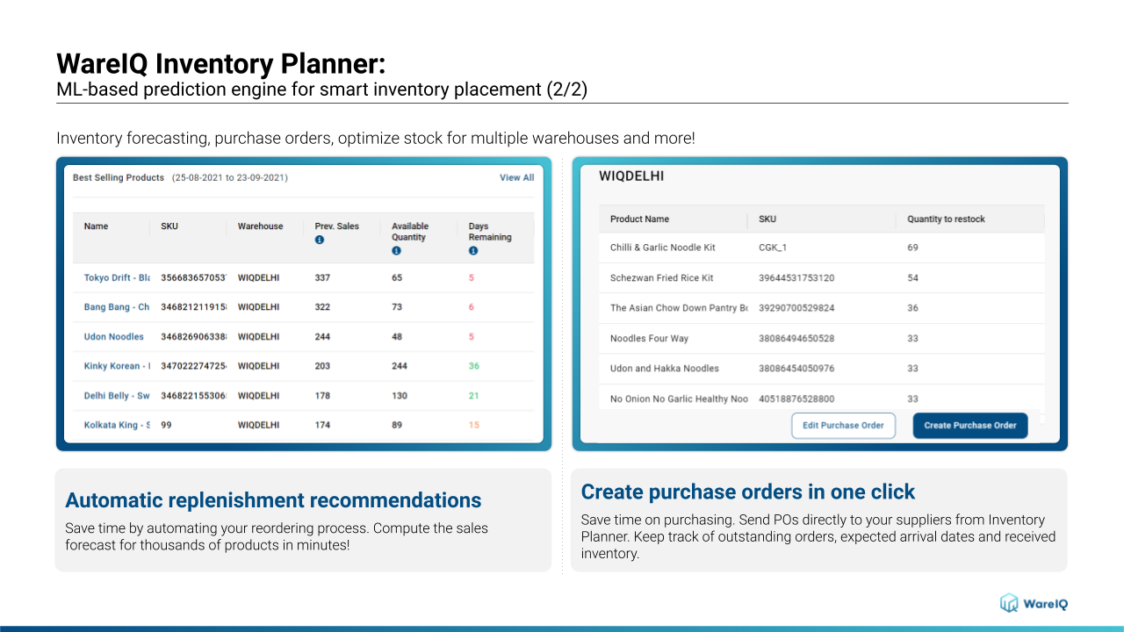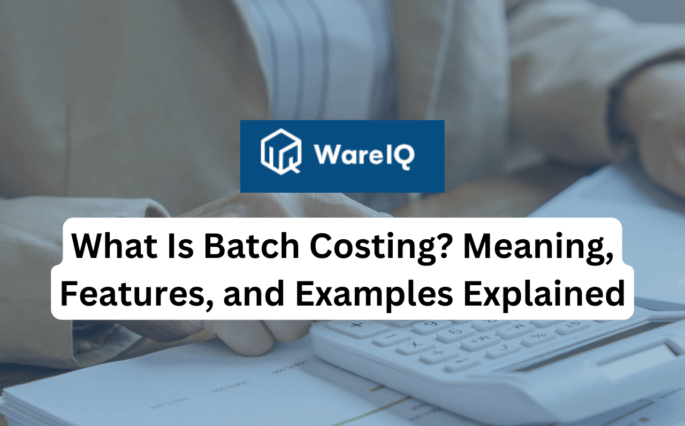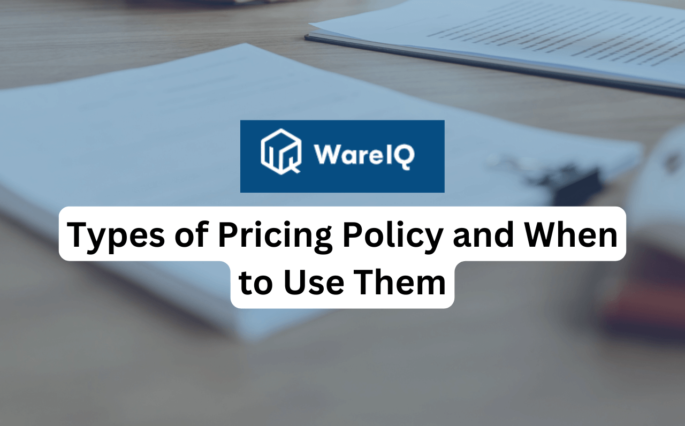What is the Weighted Average Inventory Method? What are the 4 Top Methods to Calculate Weighted Average Cost (WAC)?

The weighted average inventory method is a costing method that assigns a cost to each inventory unit based on the average cost of all units available for sale during the period. This method is used when companies purchase inventory in large quantities at different prices throughout the year. The weighted average cost per unit is calculated by adding the total cost of all units available for sale and dividing by the number of units available.
This weighted average inventory method is advantageous because it provides a more accurate representation of the actual inventory cost than other methods, such as first-in, first-out (FIFO) or last-in, first-out (LIFO). However, the weighted average inventory method can be challenging to implement if many units are available for sale or if the prices of units purchased vary widely. In these cases, it may be necessary to use a different costing method.
- What is Weighted Average Inventory? How to Calculate It?
- What is Weighted Average Cost (WAC)?
- 4 Methods to Calculate Weighted Average Cost (WAC)
- Top 3 Applications of Weighted Average Cost
- What are the Benefits and Drawbacks of Applying the Weighted Average Cost (WAC) Method?
- What are the Other Common Inventory Valuation Methods & How is it Different From the Weighted Average Inventory Method?
- Conclusion: Choosing The Right Inventory Valuation Method for Your Business
- FAQs
What is Weighted Average Inventory? How to Calculate It?
The weighted average inventory method is a calculation that assigns a weight to each type of inventory based on its value or importance. This allows businesses to assess their overall inventory levels more accurately and better manage their stock.
To calculate the weighted average inventory, using the Weighted Average Inventory Method, you need to first determine the total value of all your company’s inventory. Then, assign a weight to each type of inventory based on its value as a percentage of the total. Finally, multiply every kind of inventory by its weight to find the weighted average cost for that item.
For example, let’s say your company has three types of inventory: raw materials, finished goods and work in progress items. Assume that raw materials make up 20% of the total value of your inventory, finished goods make up 60% and work in progress makes up the remaining 20%.
To calculate the weighted average inventory using the Weighted Average Inventory Method for raw materials, you would need to multiply the raw materials by their weight and divide it by 20%. You would then need to multiply the finished goods by their weight divided by 60% for finished goods. And for work in progress, you would need to multiply it by its weight and divide it by 20%.
The weighted average inventory for your company using the Weighted Average Inventory Method would be the sum of the three weighted average inventory calculations. In this example, the weighted average inventory would be (20% x Raw Materials) + (60% x Finished Goods) + (20% x Work in Progress).
You can use this same method (Weighted Average Inventory Method) to calculate the weighted average inventory for various types of inventory. Just be sure to assign a weight to each one based on its value or importance.
The Weighted Average Inventory Method can be a useful tool for managing your company’s stock. By considering the value of each type of inventory, you can more accurately assess your overall inventory levels and make better decisions about using your resources.
WareIQ, an eCommerce fulfillment company, empowers online brands with a superior-tech platform to compete with Amazon like service levels by bringing their average delivery timelines from 5-10 days to 1-2 days.
What is Weighted Average Cost (WAC)?
The weighted average cost is a financial metric used to assess the overall cost of a company’s products or services. This cost is arrived at by considering the different costs associated with each production stage, including raw materials, labour, shipping and overheads. The final number is then weighted according to the relative importance of each factor.
In many cases, the weighted average cost can be a more accurate reflection of true cost than simply using an arithmetic average. This is because it considers the quantity of each input and the quality or importance of that input. For example, if a company’s product requires expensive raw materials but very little labour, the weighted average cost will be higher than the average arithmetic cost.
The WAC is often used to set prices, particularly when offered by a wide range of products or services. By considering the different costs associated with each item, a company can ensure that it charges a fair price for each one. In some cases, weighted average cost may also be used to assess the profitability of individual products or services.
The weighted average cost can be a valuable tool for financial decision-making when calculated correctly. However, it is important to remember that this metric should only be one part of a much larger analysis. Other factors, such as customer demand and market conditions, will also play a role in setting prices and determining profitability.
4 Methods to Calculate Weighted Average Cost (WAC)
There are various methods to calculate the weighted average cost. Some of the most common methods are:
Average Cost Method
The first weighted average cost method is the average cost method. This method takes the arithmetic mean of all the costs incurred in producing the good or service. This is the most basic and simplest method to calculate the WAC.
Weighted Average Cost Method
The second method of weighted average inventory valuation is the weighted average cost method. This method assigns different weights to different costs incurred in production according to their importance. The weight assigned to each cost is multiplied by the cost incurred. The sum of all these weighted values gives us the weighted average cost (WAC).
Marginal Cost Method
The third Weighted Average cost method is known as the marginal cost method. In this method, we consider only the costs incurred in producing one additional unit of the good or service. This method is useful when we are trying to decide whether to produce extra units or not.
Opportunity Cost Method
The fourth and final weighted average inventory valuation method is the opportunity cost method. In this method, we consider the opportunity cost of producing the good or service. The opportunity cost is the value of the next best alternative that we must forego to produce the good or service. This method is usually used when there are scarce resources and we have to choose between alternatives.
Whether we use it to calculate WAC, it is important to remember that WAC is only an average cost and not the exact cost of producing a good or service. This is because different costs are incurred at different production levels and it is impossible to assign a specific cost to each output unit. WAC only provides us with a general idea about the overall cost of production.
Top 3 Applications of Weighted Average Cost
The weighted average cost is used when a company has inventory that has been purchased at different prices and they want to calculate the average cost of that inventory. This is important for companies because it helps them determine how much their inventory is worth and how much they should charge for their products.
There are many different applications for weighted average cost, but some of the most common ones are listed below:
Stock Valuation
Weighted average cost is important for investors because it allows them to see what a company’s inventory is worth. This information can be used to make decisions about buying or selling stock.
Product Pricing
It is also important for companies because it helps them determine how much to charge for their products. If a company knows the weighted average cost of its inventory, it can price its products accordingly.
Marginal Costing
This is another important application for weighted average cost. This technique is used by businesses to determine the costs associated with producing one additional product unit. This information is important for companies because it helps them decide how much to produce and how to price their products.
What are the Benefits and Drawbacks of Applying the Weighted Average Cost (WAC) Method?
Benefits
Several benefits can be accrued by applying the WAC method and some of the most important ones are listed below:
Accurate Depiction of Actual Costs
Perhaps the most significant benefit is that it provides a more accurate representation of the true costs associated with production. The WAC method considers all costs incurred during the production process rather than direct costs.
Less Susceptible to Fluctuations
The WAC method is less subject to fluctuations in prices than other methods, such as last-in, first-out (LIFO), or first-in, first-out (FIFO). As a result, the WAC method can provide valuable information for long-term planning purposes.
Adherence to Accounting Standards
Finally, the WAC method is generally accepted by accounting standard-setters and is likely to be acceptable for financial reporting purposes.
Drawbacks
The weighted average cost (WAC) method has a few disadvantages, which include:
Bias Against Older Inventory
The WAC method can be biassed if the company has a high proportion of older inventory that is nearing its expiration date.
Inaccurate Cost Depiction of Individual Items
The WAC method does not consider the specific characteristics of each item in the inventory, so it may not accurately reflect the true costs of the individual items.
Difficult to Calculate in Some Circumstances
The WAC method can be difficult to calculate, especially for companies with large and complex inventory. It also may not accurately reflect a company’s actual costs if it has significant changes in its inventory levels during the year.
What are the Other Common Inventory Valuation Methods & How is it Different From the Weighted Average Inventory Method?
Other common inventory valuation methods include the first-in, first-out (FIFO) method and the last-in, first-out (LIFO) method. These methods can produce different results from the weighted average inventory method, depending on the order in which inventory is sold.
First In, First Out (FIFO)
Under the FIFO method, inventory is valued at the price of the earliest units purchased first. So, if you have 100 widgets in stock and you purchased 50 at $5 each and 50 at $10 each, the value of your inventory would be $500 (50 x $5 + 50 x $10).
The advantage of the FIFO method is that it more closely reflects the actual cost of goods sold (COGS). This is because the oldest units in stock are typically the ones that are sold first. As such, FIFO provides a more accurate picture of your profits.
The disadvantage of FIFO is that it can lead to higher taxes. This is because, under this method, inventory is valued at the prices that were paid for the earliest units purchased – which may be higher than the current market value. As a result, businesses may pay more taxes than they would under another valuation method.
Last In, First Out (LIFO)
Under the LIFO method, inventory is valued at the price of the most recent units purchased first. So, using the same example as above, if you have 100 widgets in stock, and you purchased 50 at $5 each and 50 at $10 each, the value of your inventory would be $1000 (50 x $10 + 50 x $5).
The advantage of LIFO is that it can lead to lower taxes. This is because inventory is valued at the prices that are paid for the most recent units purchased – which may be lower than the current market value. As a result, businesses may pay fewer taxes than they would under another valuation method.
The disadvantage of LIFO is that it may not provide an accurate picture of your actual COGS. This is because the most recent units purchased are typically not the ones that are sold first. As a result, LIFO may overstate your profits.
The choice of inventory valuation method can significantly impact a company’s financial statements. For example, using the LIFO method would result in a higher cost of goods sold and a lower ending inventory balance than using the FIFO method. This would lead to a lower gross profit and a higher income tax liability. Companies should carefully consider which valuation method best suits their particular circumstances.
Suggested – Marginal Cost vs Average Cost: What’s the Difference?
Conclusion: Choosing The Right Inventory Valuation Method for Your Business
There are a few different inventory valuation methods today, and the right one for your business depends on several factors. The first thing to consider is what type of business you have. Are you a manufacturer? A retailer? A wholesaler? Each type of business has different inventory needs and each will require a different method of valuing that inventory.
Next, you need to consider your financial goals. What are you trying to achieve with your inventory management system? Are you looking to maximise profits? minimise costs? Or some combination of the two? Depending on your answer, different valuation methods may be more appropriate.
Finally, you need to think about your accounting system. Does it allow for multiple valuation methods? If not, you may be limited in your choices.
The choice of inventory valuation method can significantly impact a company’s financial statements. The most appropriate method for a particular business will depend on that business’s specific circumstances. Manufacturers, retailers and wholesalers will all have different needs, and each type of business will require a different valuation method. Additionally, businesses need to consider their financial goals in choosing an inventory valuation method.
Some methods are better suited to maximizing profits, while others may be more appropriate for minimizing costs. Finally, businesses need to check with their accounting systems to see if they support multiple valuation methods. Otherwise, they may be limited in their choices.

WareIQ can be of assistance if you need access to the best valuation methods or help with other fulfillment and operational services. We can help you analyse the type of inventory you have and the goals you would want to set for your business in the future and recommend a valuation method accordingly.
- Pan India Fulfillment & Darkstore Network: Plug-and-play fulfillment infrastructure with no minimums, which is compliant with Amazon Seller Flex, Flipkart Assured, Myntra and other marketplaces
- Inventory & Network Planning Excellence: Best-in-class AI models for sales forecasting, product segmentation, and inventory management to reduce inventory by 40% and increase revenue by 10%.
- Vertically Integrated Fulfillment Tech Stack: Our Fulfillment Tech Solution supports integrations with 20+ top marketplaces & D2C platforms, and prominent national, regional and hyperlocal couriers, enhancing reach by covering deliveries for 27,000+ pin codes
- Supply Chain Productivity Applications: Integrate a host of supply chain productivity apps with a single-click to your existing CRMs, ERPs & accounting software to manage your logistics workflows from one command center. Use Apps like RTO Shield to get 100% RTO protection, Branded Tracking to turn your order tracking page into a profitable marketing channel, and many more.
Trusted by 300+ top Indian brands, we are helping them accelerate online sales and expedite their growth through a synergistic combination of advanced technology, robust fulfillment infrastructure & seller enablement services!WareIQ is backed by leading global investors including Y Combinator, Funders Club, Flexport, Pioneer Fund, Soma Capital, and Emles Venture Partner.







